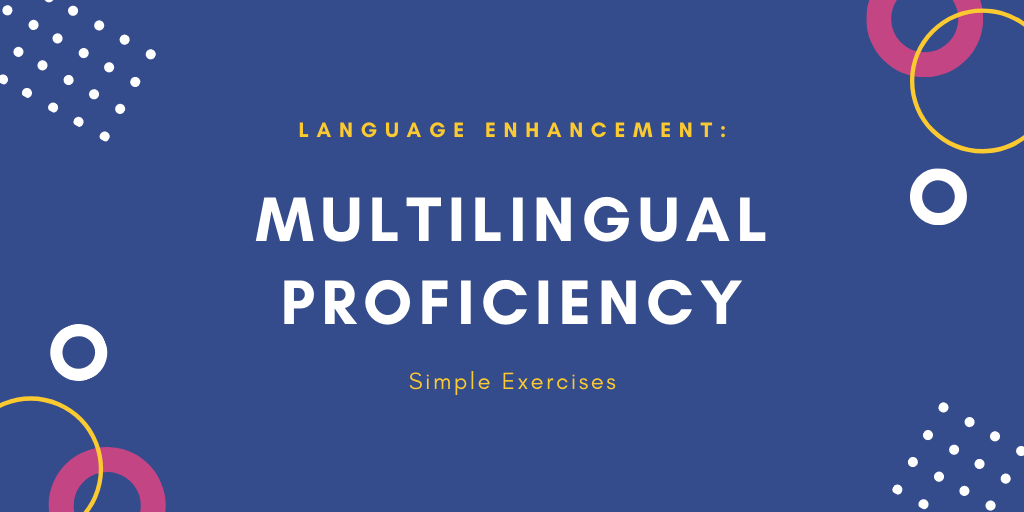The time has come for the very last post in my blog’s language series. In this article, I would love to tell you about the exercises I utilise to improve connections among the different languages I learn. In general, this training approach is strongly based on the rhetoric activities I talked about in the last post.
The first exercise I want to mention is still “The Alphabet”, where you chose one topic, and try to remember at least one word to describe it per each letter of the alphabet. Just now, you do it in every language you study. It is rather time-consuming, however, incredibly useful.
The second activity is useful to cross-reference your vocabulary in every language you know. You start similarly, by choosing a topic like “morning activities”. Next, you need to find vocabulary list for this topic in your native language (there are plenty of those available freely on the internet). What you try to do now is to remember a translation for every single word in a list in every single language you know. For example: “Читать – To read – Lesen – Leer – Yomimasu”. The level of the vocabulary list you should choose depends on your level of the target language. Personally, I would recommend not to get overly ambitious and start with beginner or intermediary lists, since it is very important to fill in the gaps on the fundamental levels. Believe me, you will be surprised to discover how many gaps you have even on the very basic levels.
The third exercise is useful to improve the speed of switching from one language to another. Remember the “Train of Thought” activity? You still need to build a train of 10 wagons, but now, the first 5 should be in one language, and the second 5 in another. You can also increase the difficulty by trying to alternate from language to language each sentence or two.
The last activity I would suggest you try out is finding proverb alternatives. Take a simple proverb in your native tongue and try to find replacements for it in other languages you learn (by googling them, for example). This exercise usually requires some research but also works wonders in enriching your speech.
I hope this post gave you some ideas on how you can practice and improve different tongues at the same time. If you know some other techniques or training approaches, please, let me know in the comments below.
I would love to thank everyone who read my posts and left their opinions – your participation was very important for me. I hope you could find something for you in my posts and wish us all enough patience and enthusiasm on this hard journey to multilingual proficiency.




Now i need to force myself to start doing this))
Thank you ,Sabina !Very interesting!I like your technique with basic word .I speak English,Russian and Hebrew .Can start to work on my Italian and French .
Thank you Sabina for your learning tips.
I’m only 11 but I already speak german, swissgerman, polish, english fluently and I’m learning french.
My favorite technique for learning a proper accent is to listen to Audiobooks.
Merci Sabina pour tes conseils d’apprentissage.
J’ai seulement 11 ans mais je parle déjà l’allemand, le swissgerman, le polonais, l’anglais couramment et j’apprends le français.
Ma technique préférée pour apprendre un accent approprié est d’écouter des livres audio.
Danke Sabina für deine Lerntipps.
Ich bin erst 11 Jahre alt, spreche aber bereits fließend Deutsch, Schweizerdeutsch, Polnisch und Englisch und lerne Französisch.
Meine Lieblingstechnik, um einen richtigen Akzent zu lernen, ist das Hören von Hörbüchern.
Dziękuję Sabina za wskazówki dotyczące nauki.
Mam dopiero 11 lat, ale mówię już płynnie po niemiecku, szwajcarsku, polsku, angielsku i uczę się francuskiego.
Moją ulubioną techniką uczenia się właściwego akcentu jest słuchanie książek audio.